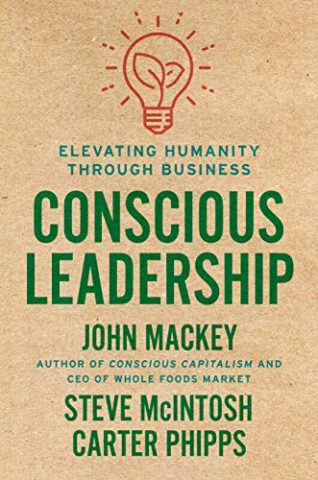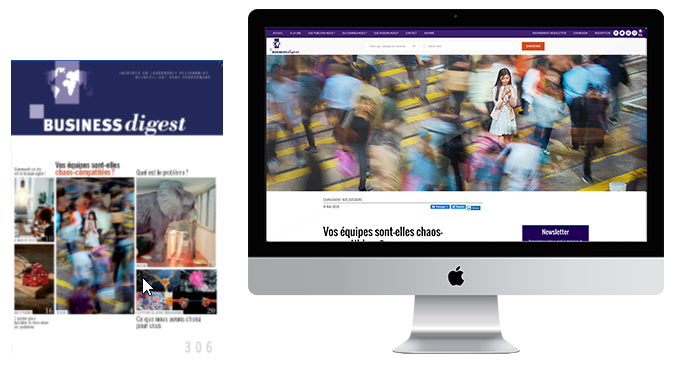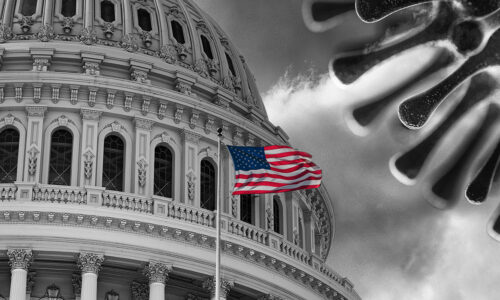The 5 keys to lifting your teams higher
The pandemic has had a knock-on effect, making us more aware of the need to change (our behavior). A viral model is emerging that will have you following in the footsteps of those pioneers who focused on human and societal values. And you’ll be bringing your teams along with you. Now it’s your move!
The last decade saw the emergence of a new model of leader driven by strong personal values that they sought to integrate into their professional lives. These leaders were the first to want to dedicate their organizations to the collective good so they could respond to the challenges facing society and the environment. The health crisis has accelerated this shift: aligning personal ideals and organizational interests is more noticeable today than ever before. These pioneering leaders are showing the way, embodying the five key alignments needed to shake things (your company) up and get your teams on board for good.

Conscious Leadership: Elevating Humanity Through Business
John Mackey
(Portfolio, september 2020)
Idealism AND pragmatism
You don’t have to choose between your personal ideals and your professional responsibilities; you can combine the two. In fact, the most well-rounded individuals are people who have managed to forge links between what is most important to them and their work. This process isn’t easy or “natural”; to pull it off you will need independence, a desire to change, the ability to question yourself, and the courage to handle disruptions. It’s all the harder because working out what (really) gives you a buzz is not innate; only a few rare souls are totally in tune with themselves from the outset. For others, their purpose takes shape over time. Studies prove that by working actively on your areas of interest and passions you can achieve gradual fulfillment over the course of your life.1
And it’s well worth making that effort; people who are successfully aligned turn their search for personal purpose into a relevant response to collective aspirations, carrying their organizations in their wake. Phil Knight founded Nike because of his passion for athletics – he wanted to make high-quality sports shoes that everyone could afford. Shaking up the status quo was the ideal closest to ex-hippie Richard Branson’s heart. He based his Virgin Group on this philosophy, and his company has disrupted every industry it has been involved in: airlines, beverage brands, finance, and many more.
Following your passions doesn’t mean losing sight of reality; it’s about finding the right balance between idealism AND pragmatism. Tony Hsieh has placed happiness at the center of Zappos’ corporate culture, using it as a lever to create exceptional customer service (such as the care taken over online sales or free delivery), which has driven up the firm’s sales.
Firmness AND kindness
Sharing and caring shouldn’t be dirty words in business. But they are. In the collective imagination, the business world is seen as a battleground between sharks driven by a Darwinian survival instinct (think Martin Scorsese’s The Wolf of Wall Street). This image has been passed down by a succession of famous bosses, including Andy Grove, founder of Intel, who called his autobiography Only the Paranoid Survive. The metaphor of high-level sport, which is also used to describe companies with references to competition, team play, etc., is more positive, but also has its limits. It is about winning at all costs “against” opponents to emerge the sole victor.
That view is outdated. These days, the success of your organization depends on its ability to take all stakeholders into account and create “win-win” solutions – including by joining forces with your competitors so you can move forward together. Jeff Bezos and Hubert Joly, CEOs of Amazon and Best Buy respectively, gambled on their synergies when they marketed Amazon Fire TV exclusively in Best Buy stores. Customers liked being able to test the product “offline” before buying it, and both brands saw their turnover boosted as a result.
1 “Debate Arises over Teaching ‘Growth Mindsets’ to Motivate Students” by Lydia Denworth (Scientific American, August 2019).
2 “Do American Workers Need a Vacation? New CareerBuilder Data Shows Majority are Burned Out at Work, While Some Are Highly Stressed or Both” (CareerBuilder, 2017).
3 “When the CEO burns out” by Leslie Kwoh (Wall Street Journal, May 2017).
4 “Senior Executives Get More Sleep Than Everyone Else” by Rasmus Hougaard and Jacqueline Carter (Harvard Business Review, February 2018)
© Copyright Business Digest - All rights reserved




